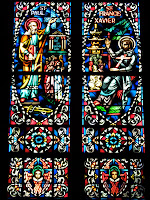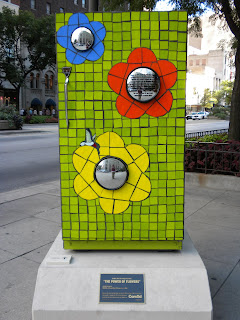
Not surprisingly, the event turned out to be very sparsely attended. Perhaps fifteen or so of my fellow coworkers showed up, but thankfully, one of them was my friend Brandon, who readers may remember from this summer's spontaneous lunchtime trip to the Lincoln Park Zoo. His presence made the trip much more tolerable, as he provided humorous color commentary on both our coworkers and the people and places lining the river as we passed by.
 My favorite buildings along the traditional river tour route are the corn cob shaped spires of Marina City. I appreciate the unique organic lines of the structures, although I imagine the round buildings must make for unusually-shaped units inside.
My favorite buildings along the traditional river tour route are the corn cob shaped spires of Marina City. I appreciate the unique organic lines of the structures, although I imagine the round buildings must make for unusually-shaped units inside. Once the sun dipped below the horizon, the beauty of the evening cityscape became apparent. This view of the city, looking south towards the Willis Tower, reminds me of Van Gogh's "Starry Night Over the Rhone."
Once the sun dipped below the horizon, the beauty of the evening cityscape became apparent. This view of the city, looking south towards the Willis Tower, reminds me of Van Gogh's "Starry Night Over the Rhone."The excursion might have been a little too long, lingering beyond the traditional southernmost point for river cruises of the River City apartment and marina complex and traveling all the way to Chinatown instead, and the evening might have been a little too cold to be outside for quite so long without gloves, but the city was, as always, lovely, and it was nice to be reminded of that.
















































